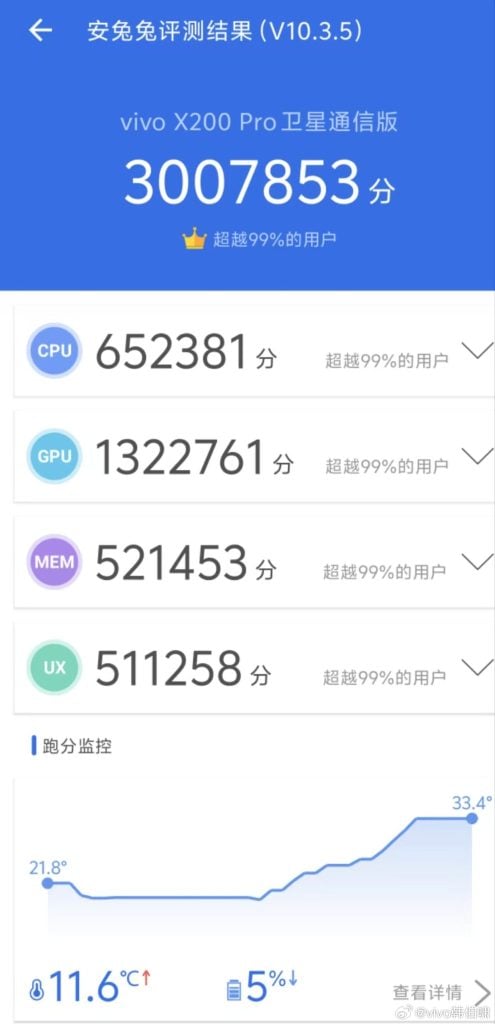Yesterday, the new Oppo Find X8 Pro Satellite Communication Version smartphone achieved record-breaking scores on AnTuTu benchmarks, powered by the Dimensity 9400 chipset, with an impressive score of 2,880,550. However, the Vivo X200 Pro Satellite Communication Version has now entered AnTuTu’s database and surpassed the Find X8 Pro, becoming the first phone to exceed 3 million points.
Vivo X200 Pro Satellite Communication Version Breaks Records
The Vivo X200 Pro Satellite Communication Version has been highlighted by Vivo Product Manager Han Boxiao, who shared a screenshot showcasing its AnTuTu performance. This smartphone, also utilizing the Dimensity 9400 SoC, scored an extraordinary 3,007,853 points, making it the first device in the market to cross the 3 million points threshold on AnTuTu.
Specifically, this remarkable score comes from the 16GB+1TB version of the X200 Pro Satellite Communication Version. The breakdown of its performance reveals scores of 652,381 points in the CPU test, 1,322,761 points in the GPU test, 521,453 points in the memory test, and 511,258 points in the UX test. These results showcase the device’s top-tier performance across all categories, establishing a new standard for flagship smartphones.
Upcoming Launch and Specifications
The Dimensity 9400 is set to launch on October 9 in China, with the X200, X200 Pro, X200 Pro Mini, and X200 Pro Satellite Communication Version being the first devices to use this new chipset. Reports indicate that the chipset, manufactured using TSMC’s 3nm process, includes one 3.63GHz Cortex-X925 ultra-core, three 2.8GHz Cortex-X4 cores, and four 2.1GHz Cortex-A7 series cores. The Cortex-X925 core alone provides a 36 percent boost in performance and a 41 percent enhancement in AI capabilities compared to its predecessor.
In terms of graphics, the Dimensity 9400 is equipped with the Mali-G925-Immortalis MC12, which features hardware-level ray tracing technology. This upgrade results in a 20 percent increase in ray tracing performance, a 37 percent improvement in overall graphics performance, a 52 percent enhancement in processing complex data, and a 34 percent rise in AI and machine learning tasks, all while achieving a 30 percent reduction in power consumption.


Leave a Reply